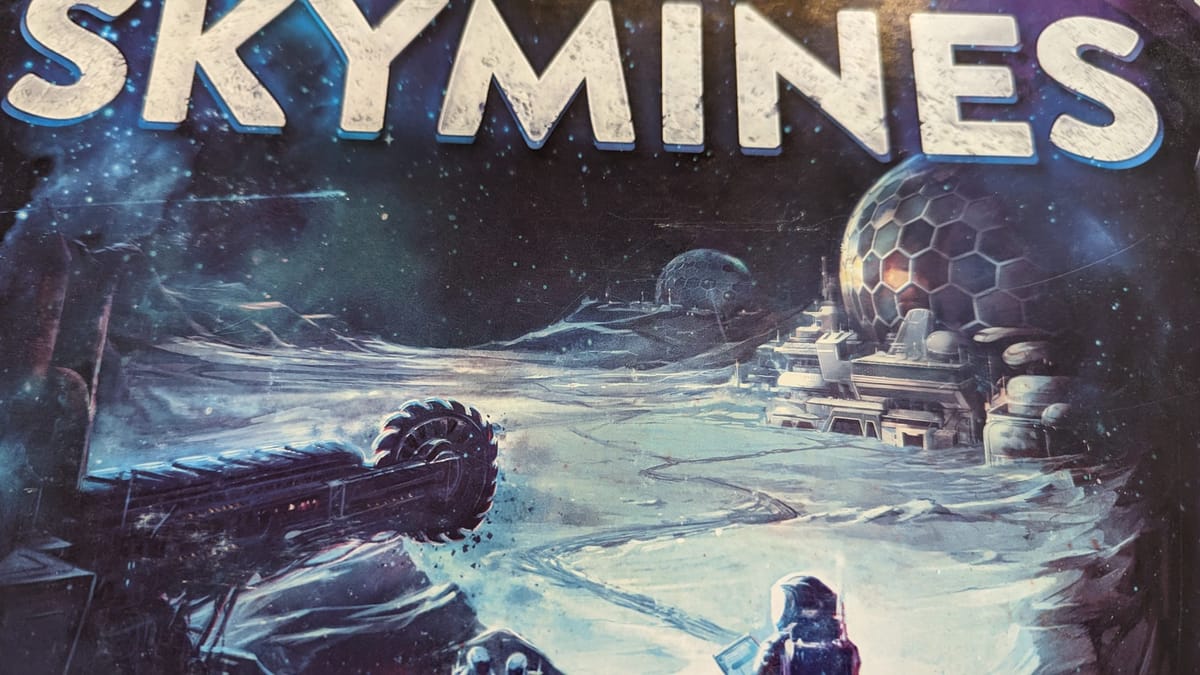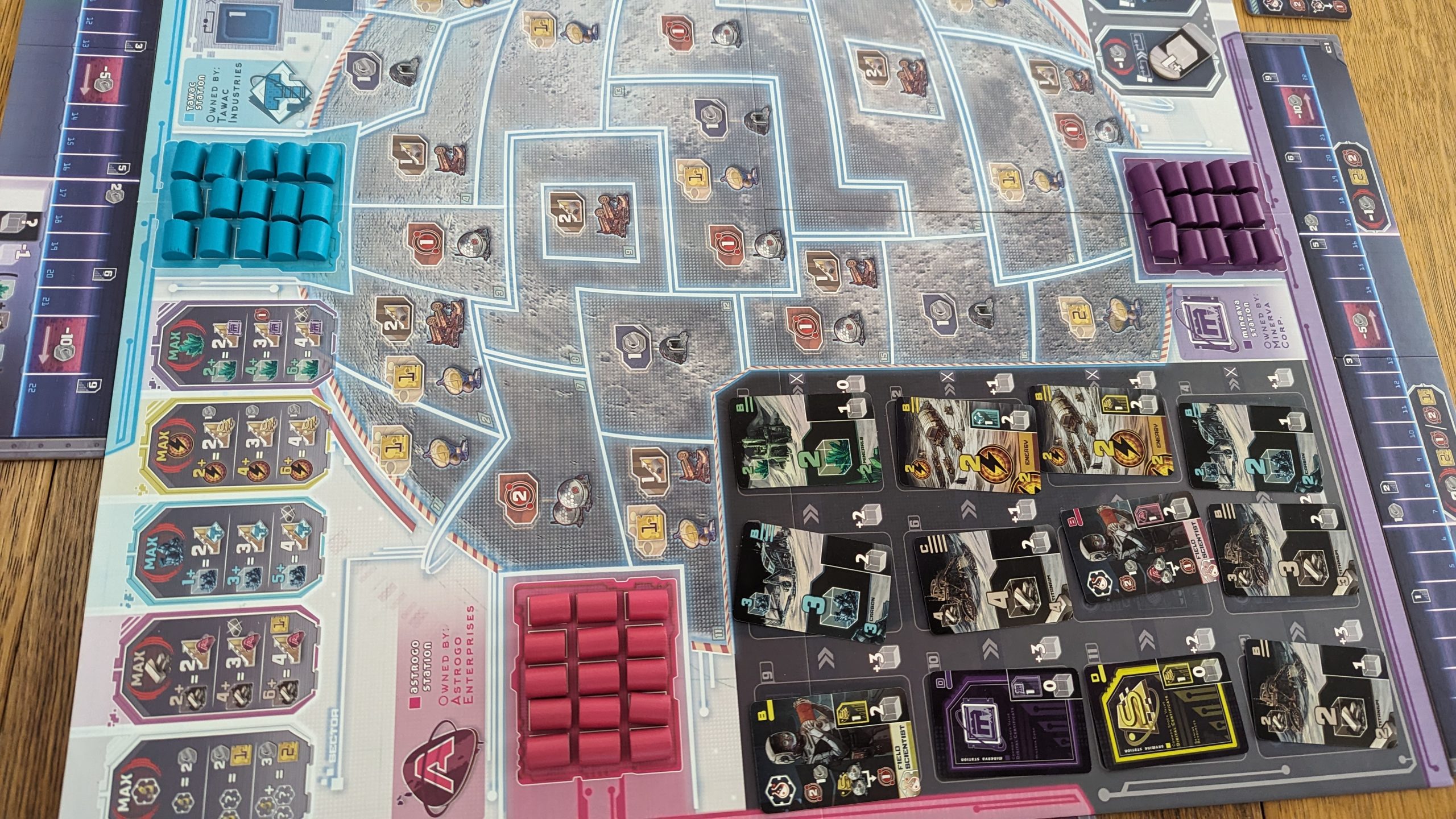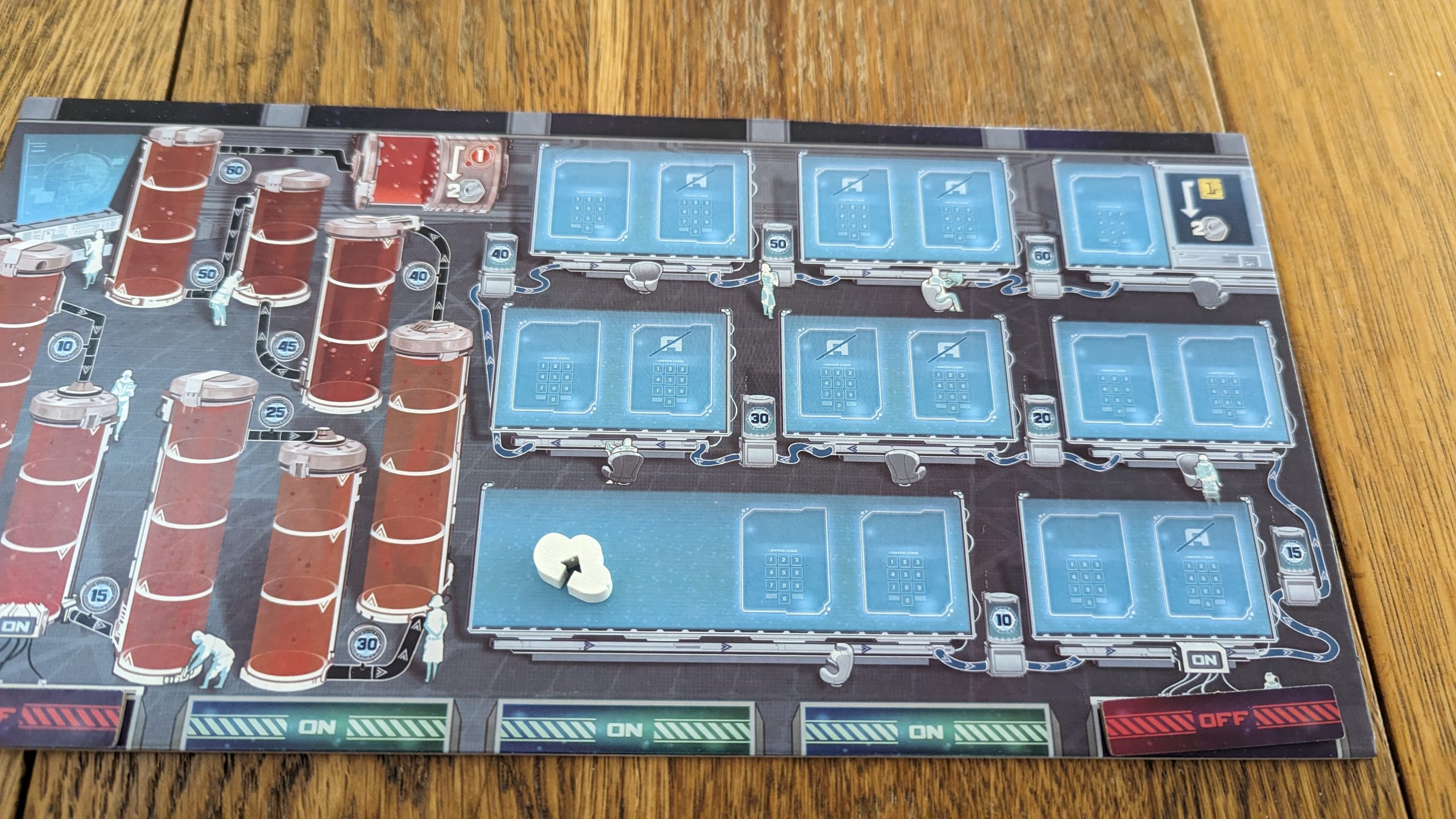
When you first look at the sheer volume of mechanics in Skymines, you’d probably think it’s overwrought and busy. There’s programming, hand management, area control, worker placement, and six different tracks to advance on. As with any game with this much going on that doesn’t last a whole day, not all of these mechanics are fully fleshed out, but there are incentives to at least dip your toes in each. The real star of the show is the hand management and programming, which turns Skymines into a game of spinning plates.

Every round starts with a planning phase, where everyone plays a card from their hand face down into one of their active slots (you start off with 3 but can unlock 2 more when you get high enough on your helium and research tracks). Once everyone’s all slotted up, cards are revealed and you get into the meat of the game, where players take turns performing actions. The only one that doesn’t involve flipping cards is doing a worker placement, spaces which either have an associated resource you need the highest value of, or a cost in coin or pitching cards to the discard. The main way you’ll be contributing to the area control part of the game is by flipping all your energy cards to expand a single company of your choice, grabbing rewards depicted in spaces you expanded the company into. You’ll be inevitably using cards faster than you’ll be retrieving them, so another action you’ll be doing a lot is flipping any combination of one resource’s cards to buy cards from the market and advancing your marker up a company’s stock track with leftovers (say a card costs 4 but you have a 2 and 3 card, you can flip both and use the leftover to go up one on a company track). Flipping a research scientist lets you advance your marker up your personal research track as fast as you meet the requirements for tiles you pass. Your last active option is flipping field scientists, which are either generic and advance your helium track a printed amount, or tied to a company, which advance you one space for every two gas collectors the company has control of. The last action you’ll do any round is dropping out, where you flip all the cards you put down that round back face-up, put them in separate cooldown piles, and then pick one up to your hand of cards.
Ideally, you approach Skymines like chess, with an ideal plan of how the game will work out before you take your first turn that you adapt as much as you can on a turn to turn basis so you can manage your card cooldowns while hitting your research goals. That’s already a problem for me, as I’m more of a tactical thinker than a strategic one, especially since I just can’t hold that much in my head after the stroke. Eventually, one of the companies will emerge as the best one to be involved in that game, and usually, the person who successfully determined which one it is first will probably win. You see, with how much everything you do is locked in multiple rounds ahead of time, there really isn’t much of any wiggle room for changing course mid-game. You’re trying to pay attention to five different things at once, and every mistake is multiplied due to the house of cards nature of the gameplay. Add in the iconography that never really clicked for me leading to an inevitable mistake or two over the course of the game, and you’ve got a game that I can understand the appeal of, but simply isn’t for me.

Indulge me in a brief aside at the end here. Skymines is a minimally altered reskin of Pfiester’s Mombasa, one of those games with a paper-thin theming of whitewashed colonialism. I’ll give them some points for listening to everyone critiquing their uncritical depiction of colonialism and deciding to change the theme, but there’s an underlying problem here. We should be having a more visible discussion about the problems with space colonialism, but when I was playing Skymines, it was impossible for me to not notice how I was playing Mombasa, a game about real world colonial exploitation, but with the setting conveniently shifted to a place without a racialized people. Not only does it smack of an easy out, but the whole argument is a paraphrasing of those aforementioned real world colonizers, who justified the atrocities they committed by painting the natives of their colonies as less than human. You know what’s easier than convincing a modern audience that historical dehumanizing is ok? Transporting your colonialism to the stars and magically erasing the natives. Suffice to say, I found Skymines’ theme exceptionally off-putting within the context of it being essentially Mombasa 2e.
Skymines
Great
My issues with the mechanics of Skymines are admittedly personal, and I've played with plenty of people who found it enjoyable. Be forewarned, though, that the move from one uncritical depiction of colonialism to another is going to leave a fair share of people feeling uncomfortable.
Pros
- Tight mechanical design
- Programming several rounds ahead of time constricts your options, making a game that feels heavy functionally lighter
Cons
- Iconography is less than intuitive
- Uncritical colonist theme 2.0 is really gross
